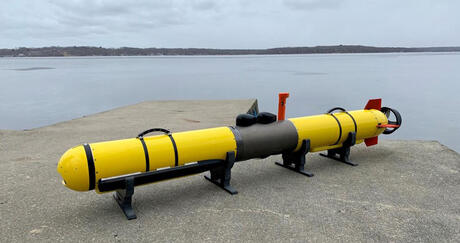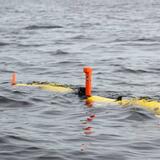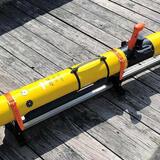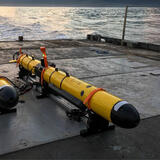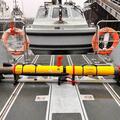L3Harris has achieved a significant advancement delivering the first production Autonomous Undersea Vehicles (AUV) powered by Lithium-ion (Li-ion) Passive Propagation Resistant (PPR) batteries that are certified for use on U.S. submarines. The rechargeable Li-ion batteries allow the Torpedo Tube Launched and Recovered (TTL&R) Iver4 900 AUV to achieve multiple sorties with a minimum footprint in the torpedo room.
L3Harris partnered with the U.S. Navy to implement the Navy-designed, fault-tolerant Li-ion PPR battery pack technology based on the NASA spacesuit design to enable their use in Iver4 900 AUVs deployed on U.S. submarines. These battery packs provide twice the endurance over previously approved single use, lower energy density batteries; an important enabler for TTL&R capability. Iver4 900 Li-ion PPR battery packs are produced by Inventus Power and use a modified version of L3Harris’ Iver4 900 Battery Management System (BMS).
Today, L3Harris is the first to deliver production Li-ion PPR units to operational Iver4 900 AUVs in service with USN fleets, and the only AUVs with Li-ion batteries approved for submarine use by the Navy Weapon Systems Explosives Safety Review Board (WSESRB) (navy.mil).
Li-ion batteries are the preferred choice for portable energy storage because of their high energy density and superior performance. Li-ion batteries offer greater energy capacity in a scalable package, higher discharge rates and longer battery life, typically lasting 8-10 years compared to the 3-5 years of other battery types. They can be recharged more times and at faster rates and possess a much higher energy density for extended battery life. Furthermore, Li-ion batteries provide greater stability, making them crucial for time-sensitive, high-utilization applications.
As the Navy’s focus on unmanned platforms increases, there is a growing need for robust energy solutions. Modern innovative technologies, requiring substantial power, are being implemented. Safe use of Li-ion batteries represents a significant milestone in unmanned systems technology.
In 2023, L3Harris was the first to achieve fully autonomous repeatable launch and recovery of an AUV from an underway submarine. As the company continued to expand TTL&R capability for real-world missions, L3Harris supported the Navy with development of hybrid (manned-unmanned) operational concepts, including Li-ion PPR batteries for submarine use.
As described in the NAVALNEWS article "AUKUS Underwater Capability Developments Target Torpedo-tube UUV System," Dan Packer – AUKUS Director for the USN’s Commander Submarine Force – mentioned the TTL&R UUV will help preserve a submarine’s ordnance capacity. The reduced footprint the rechargeable Li-ion batteries enable further realizes this goal.
The capability to recover AUVs into an underway submarine enables the host submarine to remain concealed in safe waters. AUVs are deployed to conduct surveys and execute missions in areas inaccessible to the host. Upon returning, the recovered high-fidelity data is used for tactical, navigational planning and decision-making that facilitates manned-unmanned teaming. Li-ion PPR batteries installed in AUVs onboard submarines offer the highest capacity, reliability and lightweight solution for undersea missions. As the Navy expands its distributed maritime undersea operations, high-capacity batteries will be necessary to support the integration of new capabilities onboard submarines.
The proven capabilities and real-world maritime mission experience of L3Harris’ AUVs demonstrate the value of autonomy in addressing current operational maritime gaps. This new capability will enhance operational effectiveness, leading to a growing demand for Li-ion batteries in the maritime domain in the coming years.
L3Harris is advancing new operational concepts to maximize warfighter effectiveness and is delivering manned-unmanned solutions today. By expanding undersea advantages and working closely with military and industry partners, L3Harris is effectively countering threats and rapidly delivering forward-leaning technology to meet immediate operational needs.
Whether it's expanding undersea capabilities or developing modular AUVs to support Distributed Maritime Operations, L3Harris' solutions are designed to help maintain dominance in the undersea domain.

